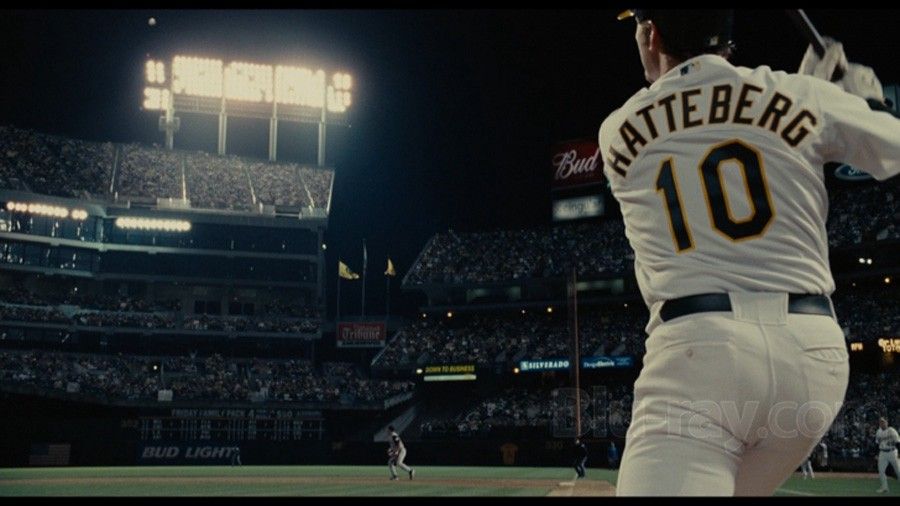Moneyball for Builders: How to Win When You Can’t Outspend
The Play That Changed Everything

Oakland, 2002. The A’s are chasing their 20th straight win. They blow an 11–0 lead. The stadium goes quiet—then Scott Hatteberg, a catcher with bad elbows turned first baseman, walks up as a pinch-hitter and crushes a walk-off. Ballgame. Streak alive.
That moment wasn’t luck. It was strategy: buy outcomes, not names. Moneyball shows how GM Billy Beane beat bigger payrolls by betting on the one thing the market was undervaluing—getting on base—and building a system around it.
This isn’t just baseball. It’s a playbook for any team trying to compete without a blank check.
1) Start with the constraint (and make it your edge)
The movie moment: After losing stars (Giambi, Damon), Beane sits in a dusty scouting room listening to opinions about “pretty swings.” He cuts through it: “We’re a small market team. If we try to play like the Yankees in here, we will lose to the Yankees out there.”
Your move:
- Write your top 3 constraints (budget, headcount, time).
- Turn each into a rule: Because we have less ___, we will do ___ better than anyone.
- Cut anything that doesn’t directly move the goal.
2) Find your “on-base percentage” (the metric that actually matters)
The movie moment: Jonah Hill’s character (inspired by exec Paul DePodesta) explains the math: stop paying for looks; pay for the ability to reach base. That one stat—OBP—was a leading indicator of runs and wins, and it was mispriced.
Translate to business:
- E-com: Optimize add-to-cart and checkout start (not just clicks).
- Services/agency: Track qualified replies → booked calls → closes (not likes).
- Subscriptions/SaaS: Prioritize activation and retention (not just signups).
A good “Moneyball metric” is: close to revenue, actionable this week, and undervalued by your competitors.
3) Build a “misfit” roster that produces the stat
The movie moments:
- Hatteberg (injured catcher) becomes a first baseman who walks a ton.
- David Justice (aging star) still gets on base.
- Chad Bradford (awkward submarine pitcher) quietly gets outs.
Everyone looked imperfect. The numbers said they’d win.
Your move:
- Hire for proof against the metric, not vibe.
- Use short paid auditions tied to the goal (e.g., “Lift checkout start +10% in 14 days”).
- Tie 10–25% of comp/bonus to the metric so the whole team rows in one direction.
4) Expect pushback—and manage it with receipts
The movie moments:
- Manager Art Howe won’t run Beane’s lineup.
- Beane forces the system by trading away players that block the plan.
- The infamous line: “Adapt or die.”
Your move:
- One shared scoreboard (daily): show the metric trend where everyone sees it.
- Weekly 20-minute review: what worked / what didn’t—no blame, just data.
- Pair a data translator with an operator so insights don’t die in a deck.
5) Run tight experiments (small bets, fast cycles)
The movie rhythm: The A’s tinker, ship, adjust. Then the streak hits. Not magic—iteration.
Your move:
- Test 2–3 changes per week, one hypothesis at a time.
- Give tests 7–14 days (unless you have huge volume).
- Kill losers fast. Scale winners. Document lessons so you don’t re-learn them.
Example hypotheses:
- “Shorter PDP copy + sticky ATC lifts add-to-cart by 12%.”
- “On-model photos vs. flat lays reduce bounce by 8%.”
- “One-click re-order email at day 28 raises repeat rate by 15%.”
6) Sell the story (numbers don’t sell themselves)
The movie moments: Beane has to convince ownership, scouts, and players. He uses a simple narrative: problem → non-obvious insight → simple plan → early proof → ask.
Your move (one-pager template):
- Goal metric (current → target)
- 3 plays to move it (bullets + owners)
- Timeline and check-in date
- Early proof (screenshots, clips, trendline)
7) A simple 90-day Moneyball plan
Days 1–7 — Define the game
- Choose one north-star metric.
- Build a clean dashboard (updates daily).
- Cut low-impact projects.
Days 8–30 — Build the roster
- Reassign people to work tied to the metric.
- Run 4 high-leverage experiments.
- Set incentives and scorecards.
Days 31–60 — Test & tune
- Ship 2–3 experiments weekly.
- Kill losers; codify one winner into an SOP.
- Fix any bottleneck slowing results.
Days 61–90 — Scale what works
- Double down on the 2 biggest wins.
- Hire/contract for the gaps the tests exposed.
- Publish your “Moneyball v1” handbook so the system survives turnover.
8) Pitfalls the film hints at (and how to dodge them)
- Model myopia: Metrics are a map, not the territory. Watch real customer behavior.
- Copy-paste envy: Don’t clone a giant’s playbook. Fit it to your constraints.
- Short-term wins that break long-term LTV: Guard retention.
- Culture tax: If your team doesn’t buy in, it won’t stick. Keep selling the why.
9) Why the Hatteberg homer matters for you
That swing was the proof a system can beat payroll. The A’s didn’t buy superstardom—they stacked small edges that compound: a walk here, a single there, a reliever who gets grounders, a lineup card that follows the math. In business, it’s the same: one clear metric, the right roster, tight experiments, and the discipline to keep going when it’s not flashy.
You don’t need the biggest budget. You need clarity, consistency, and a stat that actually leads to wins.
🧠 ThinkwithAD – PULSE
Practical playbooks for growth—money, mindset, brand, and moves that actually land. Urban lens, professional execution. No filler, just strategy.

⚠️ Disclaimer: This article is for educational purposes and reflects general observations. It isn’t financial, legal, or professional advice. Movie scenes and characters referenced are used for commentary; the “Peter Brand” character is a composite inspired by real executive Paul DePodesta. Results vary based on execution and market conditions.